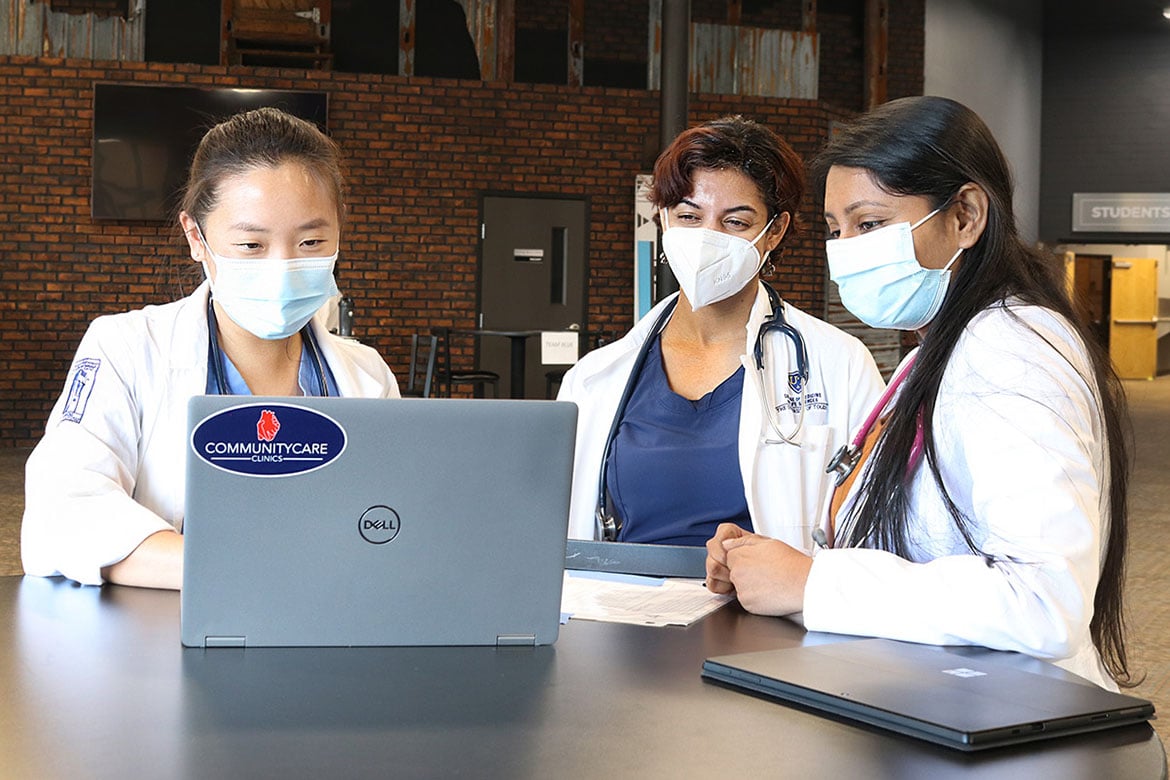A career in medicine is defined by service to patients. Pre-clinical medical students at the University of Toledo College of Medicine and Life Science are demonstrating that commitment from their earliest days in physician training, and the work is helping inform their efforts to create change through organized medicine.
Toledo’s CommunityCare Clinics are student-run, offering free care to uninsured patients in the area. The clinics operate 14 nights a month across four sites and served more than 4,200 patients last year, and was recognized as the 2022 free clinic of the year by the Charitable Healthcare Network, in partnership with the Ohio Department of Health.
“We meet the need in our community where other health centers aren't able to meet it,” said AMA member Sydney Hatch, a second-year medical student who also works as the clinic’s director of administration. “There's definitely other charitable clinics that require a copay. There's federally qualified health centers, but few are truly doing 100% free health care.”
Early patient encounters
The clinics—like many others staffed by medical student volunteers across the nation—are powered by volunteer involvement from roughly 90% of Toledo’s first- and second-year medical student classes. In addition to serving the community, there are vast educational benefits to medical students who work in the clinic. They often serve as a first point of contact for patients at the clinic, doing histories and physicals.
Medical students talk with patients about their medical conditions, medication regimens and family history. Students then discuss this with a physician. Patients are examined by the medical student and the physician, and the doctor makes all decisions regarding patient care.
“It's the first patient contact that our students get,” said AMA member Addison Sparks, a second-year medical student who works as the clinic’s executive director. “We allow first-year students to have supervised interactions with patients.”
“It's really rewarding to learn about something in lecture and you think you know it, and then you actually see it in real life and how it can affect a person's well-being,” Sparks said. “Then you have the opportunity to address that and then improve their condition for them, which is just really valuable.”
Sparks, who speaks fluent Spanish, tells the story of working as an interpreter for a patient. The encounter made an impression on both her and the patient.
“It was kind of a run-of-the-mill visit for something like a medication refill,” Sparks said. “She came back a few weeks later and asked for me by name to interpret for her again. She said that I was really friendly and made her comfortable and that really made me tear up, knowing that I had made it such a good experience for her and that she wanted to have me in her corner again. I'll reflect on that for probably the rest of my life.”
Driving change
The clinics’ leadership team is heavily populated by student members of Toledo’s AMA medical student chapter. For Katherine Esser, who has roles as the clinic’s director of public relations and as the president of Toledo’s AMA chapter, the experiences she is having in the clinic inform her work in organized medicine.
“Every day I'm able to go into the free clinic and I'm able to see what our most vulnerable population needs,” said Esser, a second-year medical student.
Those lessons and observations helped inform policy that was put forth by Toledo students at the 2022 AMA Medical Student Section Interim Meeting, Esser said.
“We passed a few policies that were written by Toledo students and a few others were considered, because we are able to see what our patients need and how we can serve them,” Esser said. “Then we can use AMA policy and organized medicine to continue to protect them and to provide better care. For me, the AMA and the clinic make so much sense together.”
The AMA Succeeding in Medical School series offers tips and other guidance on a wide range of critical topics, including preparing for USMLE exams, navigating clinical rotations, publishing scientific research, and maintaining optimal health and wellness.





